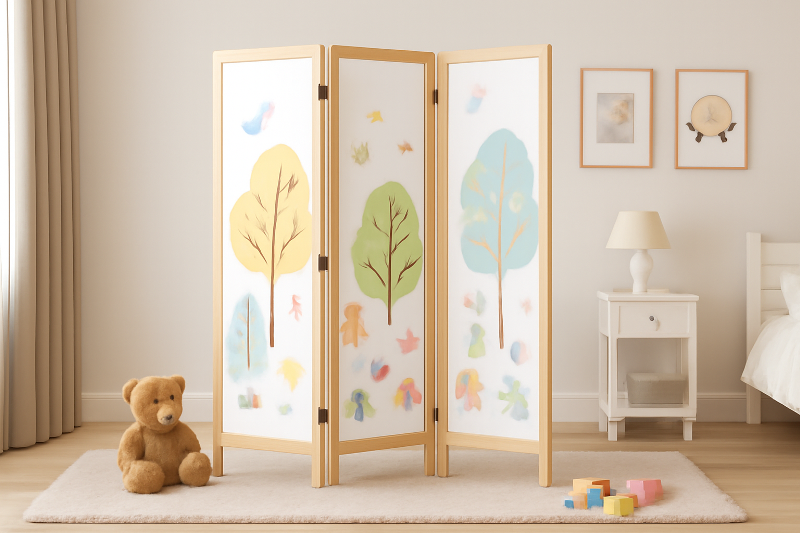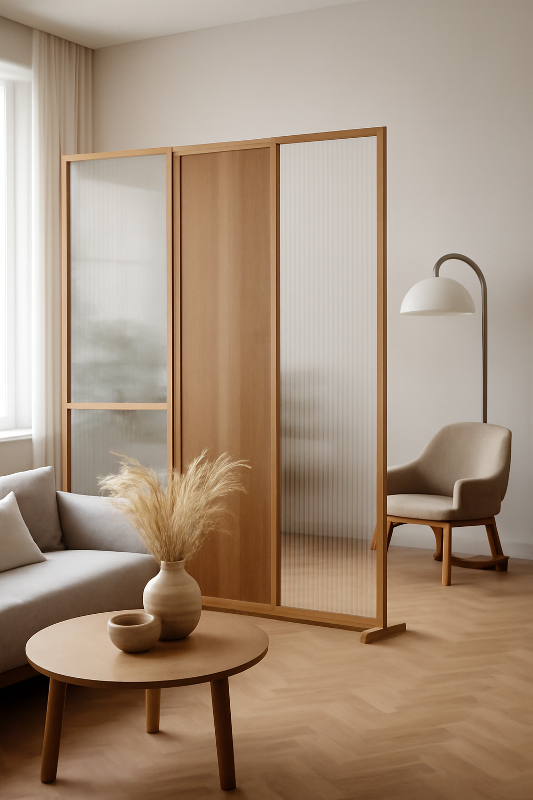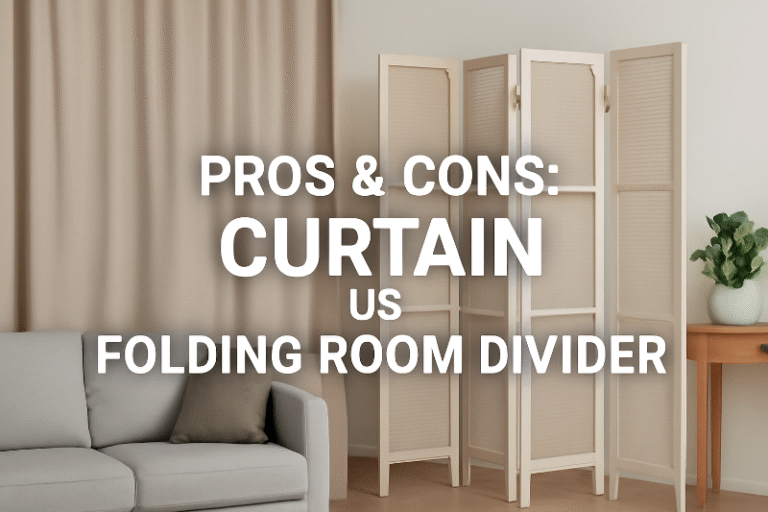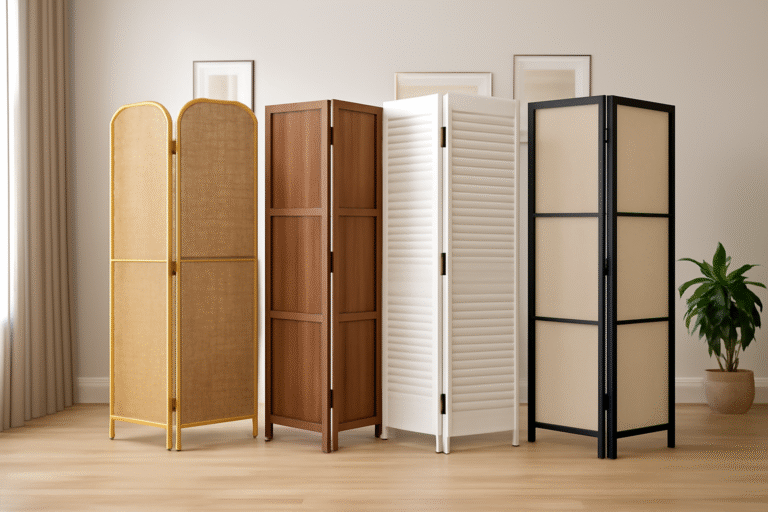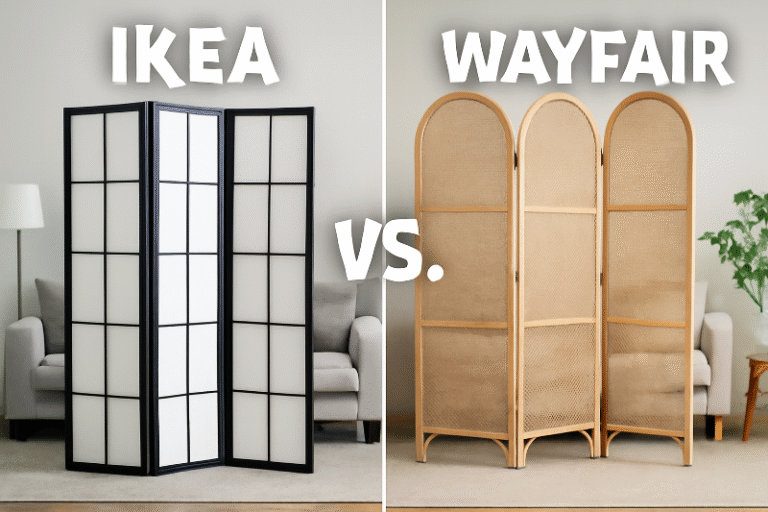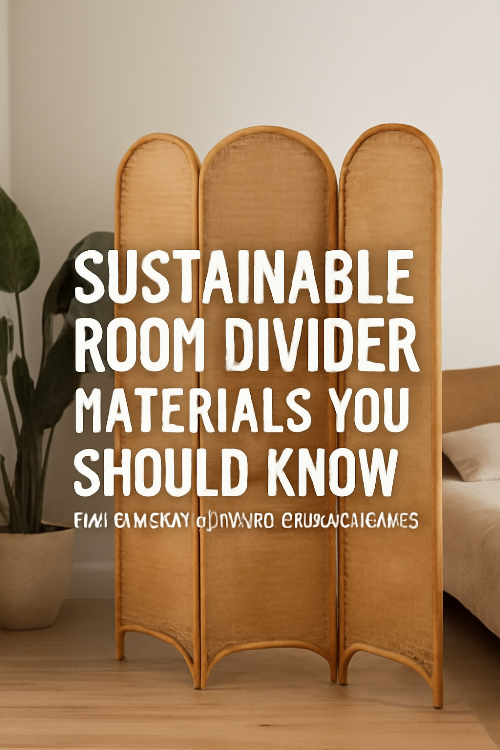When it comes to decorating a child’s room or creating shared spaces in a home, room dividers can serve as an excellent solution for both privacy and organization. Whether you’re creating personal zones for siblings or providing a separate play area, room dividers for kids need to balance safety, durability, and aesthetic appeal. In this article, we will explore the key considerations for choosing the best room dividers for kids’ rooms, focusing on both safety and style, with practical examples and recommendations to help you make an informed decision.
Why Use Room Dividers for Kids’ Rooms?
Room dividers are a versatile and practical way to organize shared spaces. Here are a few reasons why dividers are especially beneficial in children’s rooms:
- Privacy and Personal Space: As kids grow older, the need for personal space increases. Room dividers allow each child to have their own private area, whether it’s for sleeping, studying, or playing.
- Zoning and Organization: In small rooms or multi-functional spaces, dividers can help separate distinct zones, such as a play area, study corner, or sleeping nook, making the space more functional.
- Safety: A well-chosen room divider can act as a protective barrier, especially for toddlers or younger children. It can help keep them away from potential hazards like furniture edges or sharp objects.
Key Considerations for Choosing the Best Room Divider for Kids
When selecting room dividers for children’s spaces, safety and functionality should always come first. Here are the top factors to consider:
1. Safety First: Non-Toxic Materials and Stability
Safety is the number one priority when choosing a room divider for kids. You’ll want to avoid any harmful materials or features that might pose a risk. Look for the following:
- Non-Toxic Materials: Choose room dividers made from BPA-free, phthalate-free, and lead-free materials to ensure they are safe for kids. Look for certifications like GREENGUARD Gold or Oeko-Tex Standard 100 for reassurance.
- Stability: The divider should be stable enough to prevent tipping over, especially in active environments like kids’ rooms. Some folding room dividers or lightweight screens may not be as sturdy as others, so ensure that the divider is heavy enough or has built-in safety features to prevent accidents.
- Rounded Corners: Sharp edges or corners can be dangerous for children. Opt for dividers with rounded edges or those designed with soft corners to minimize injury risks.
2. Durability: Built to Last
Kids can be rough on furniture, so a room divider needs to be durable and capable of withstanding daily use. Look for options that are built to last, such as:
- Wooden Dividers: Solid wood dividers tend to be more robust and long-lasting than plastic or fabric options. Wood is less likely to tear or get damaged and can handle rough play.
- Fabric Screens: If you prefer fabric-based dividers, make sure the material is tear-resistant and easy to clean. Some fabric dividers come with washable or removable covers for convenience.
- Metal or Plastic Frames: If choosing a folding screen with a metal or plastic frame, ensure it’s made of high-quality material that won’t break or warp over time.
3. Style: Fun and Engaging Designs
The style of the room divider is just as important as its functionality. The divider should complement the existing decor while adding a playful or imaginative touch to the room. Some ideas for stylish and child-friendly dividers include:
- Themed Dividers: Choose dividers that incorporate fun themes, such as animals, cartoon characters, or nature motifs. These not only look visually appealing but also create a more engaging atmosphere for kids.
- Bright Colors and Patterns: Colorful room dividers can add vibrancy to a child’s space. Opt for bold primary colors, pastels, or fun patterns that match the rest of the room’s decor.
- Customizable Options: Some dividers, such as those made from pegboard panels or modular shelving units, offer customization options. You can let your child decorate or arrange the divider however they like, allowing them to express their creativity.
4. Easy to Use and Maintain
Kids are constantly moving around, so you need a room divider that’s easy to use and maintain. Some considerations include:
- Lightweight and Portable: A lightweight divider is easier to move around and adjust when needed. This is especially useful in shared rooms or if the space serves multiple purposes.
- Easy to Clean: Kids can be messy, so choose a room divider that’s easy to clean and maintain. Fabric dividers should be washable, and wooden or plastic dividers should have smooth surfaces that can be wiped down with a damp cloth.
- Freestanding and Stable: A freestanding room divider is convenient and does not require installation, making it perfect for renters or for spaces that need flexible configurations. Ensure that it has a solid base or support to prevent it from falling over.
Types of Room Dividers for Kids
Here are some popular types of room dividers that are perfect for kids’ rooms:
1. Folding Screens
Folding screens are a great option for kids’ rooms because they are flexible, portable, and easy to store when not in use. Many folding screens come with adjustable panels, so you can customize the size of the divider based on the space you need to divide.
Pros:
- Easy to move and store
- Can be made from a variety of materials (wood, fabric, etc.)
- Available in fun patterns and designs
- No installation required
Cons:
- May not provide full privacy or sound insulation
- Less stable compared to more permanent dividers
2. Fabric or Curtain Dividers
Curtains and fabric dividers are perfect for creating a soft and comfortable separation in a kids’ room. These are great for larger rooms where you might need to divide off a sleeping area, play area, or study nook.
Pros:
- Soft, cozy feel that suits a child’s room
- Flexible and easy to adjust
- Ideal for renters (no drilling or permanent installation needed)
Cons:
- Less durable than wood or metal options
- Might not provide enough structural support or privacy
3. Shelving Dividers
Shelving dividers are functional and stylish, offering the added benefit of extra storage space. Modular shelving units, such as the IKEA KALLAX, can help divide spaces while also holding toys, books, or art supplies.
Pros:
- Provides both space division and storage
- Solid and durable
- Can be used to display toys or decor, adding to the room’s style
Cons:
- Takes up more floor space
- Can be more expensive than other divider types
4. Panel or Slat Dividers
Panel dividers, like wooden slats, can provide a more permanent separation between spaces while offering a stylish and functional look. These dividers often come in a variety of designs, from rustic wooden slats to modern, geometric patterns.
Pros:
- More permanent and sturdy
- Can be decorative and add architectural interest to the room
- Excellent for creating a defined space
Cons:
- Requires installation, which may not be suitable for renters
- Not as easily moved or adjusted
Top Room Divider Picks for Kids’ Rooms
- IKEA HÖRDA Room Divider
A budget-friendly option with a simple design, the HÖRDA divider is made from wood and fabric and is easy to move around. Ideal for small spaces or shared rooms. - Wayfair Folding Room Divider Screen
This decorative folding screen offers fun, playful designs, making it perfect for kids’ rooms. It’s lightweight and portable, with a sturdy frame for long-term use. - Amazon Basics Room Divider
A versatile option that comes in multiple colors and materials. It’s easy to assemble, lightweight, and can be moved around as needed. - KALLAX Shelf Unit from IKEA
While not a traditional room divider, the KALLAX unit can act as a functional divider with its open shelving and ample storage space.
Conclusion
Choosing the right room divider for a child’s room requires careful consideration of both safety and style. Whether you choose a folding screen, fabric divider, or shelving unit, ensure that the divider is made from child-safe materials and provides adequate durability for everyday use. With the right room divider, you can create a functional, organized, and visually appealing space that meets the unique needs of your child’s room.
